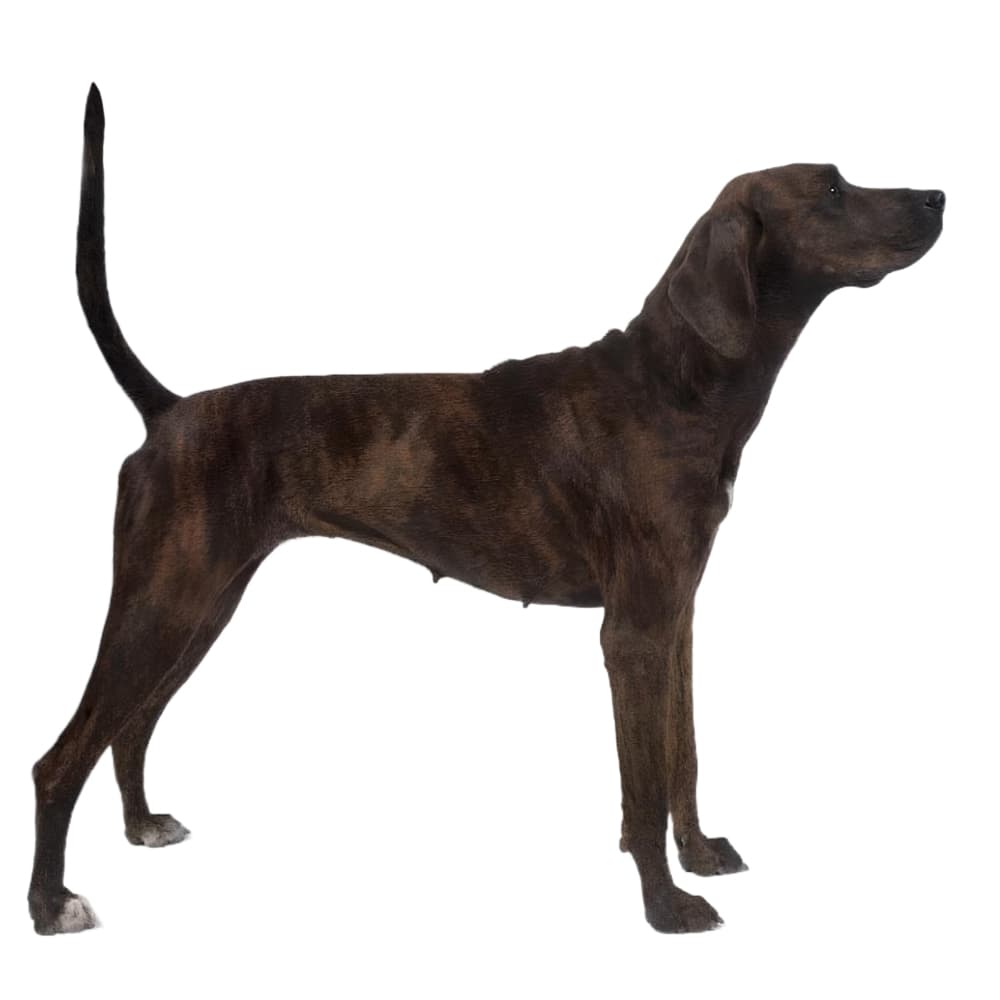Discover your dog's connection to this breed and 200+ others


Discover your dog's connection to this breed and 200+ others



The Plott Hound is a breed of scent hound that originated in Germany and was brought to the United States in the 18th century. The breed's history traces back to the Plott family, a group of German immigrants known for their exceptional hunting skills. Upon arriving in North Carolina, the Plott family bred their hounds with local dogs, resulting in the development of the Plott Hound we know today. The breed's excellent tracking abilities and endurance made it popular for hunting big game, such as boar and bear.
Plott Hounds are known to be generally healthy dogs, but as a larger breed they are at risk for developing orthopedic problems, such as hip and elbow dysplasia. They are susceptible to bloat, also known as gastric dilation volvulus (GDV). This is a life-threatening condition that can come on suddenly, so it’s important to know the warning signs and get an affected dog immediate veterinary care. Genetic testing is recommended, including for the following specific conditions: hyperuricosoria, degenerative myelopathy, and progressive rod-cone degeneration.
Plott Hounds are known for their courage, intelligence, and determination. They are loyal and affectionate towards their families, making them great companions and watchdogs. Due to their hunting background, they possess a strong prey drive and may have a tendency to chase small animals. Early socialization is essential to ensure they get along well with other pets and animals.
A canine genetic lineage is a group of individuals or entire breeds that descended from common ancestors predating modern breed formation. Often these lineages are associated with a ‘type’ of dog with a unique historical working role and associated behaviors (e.g., herding, scent hunting, etc.).
Scent Hounds were historically used as hunting dogs. They were bred for their exceptional sense of smell, which is also a defining factor of this lineage of dogs. Scent hounds also have a distinctive bark which sounds more like a howl, this was developed to communicate with their hunters. Many breeds within this lineage were bred to work in groups, and have a strong pack mentality. Scent Hounds tend to have a stronger drive to follow their nose instinctually than their human counterpart. Scent hounds are also known for their endurance and stamina, these traits allow them to follow scents over long distances and for long periods of time.
Example breeds with ancestry from this lineage include Basset Hound, English Foxhound, and Dachshund.
The Plott Hound is the official state dog of North Carolina, USA, in recognition of its historical significance and contributions to hunting.
They are exceptional treeing dogs, meaning they can chase game up a tree and keep it there until the hunter arrives.
Plott Hounds are known for their distinctive "bugle" or "bawl" vocalization while on the hunt.
This breed's adaptability and endurance make them suitable for various dog sports and activities, such as agility and tracking trials.
https://vgl.ucdavis.edu/breed/plott-hound
https://www.akc.org/dog-breeds/plott-hound/
https://www.ukcdogs.com/plott-hound
Recommended by top vets with decades of experience
21 breeds
64 genetic health markers
50 genetic trait markers
